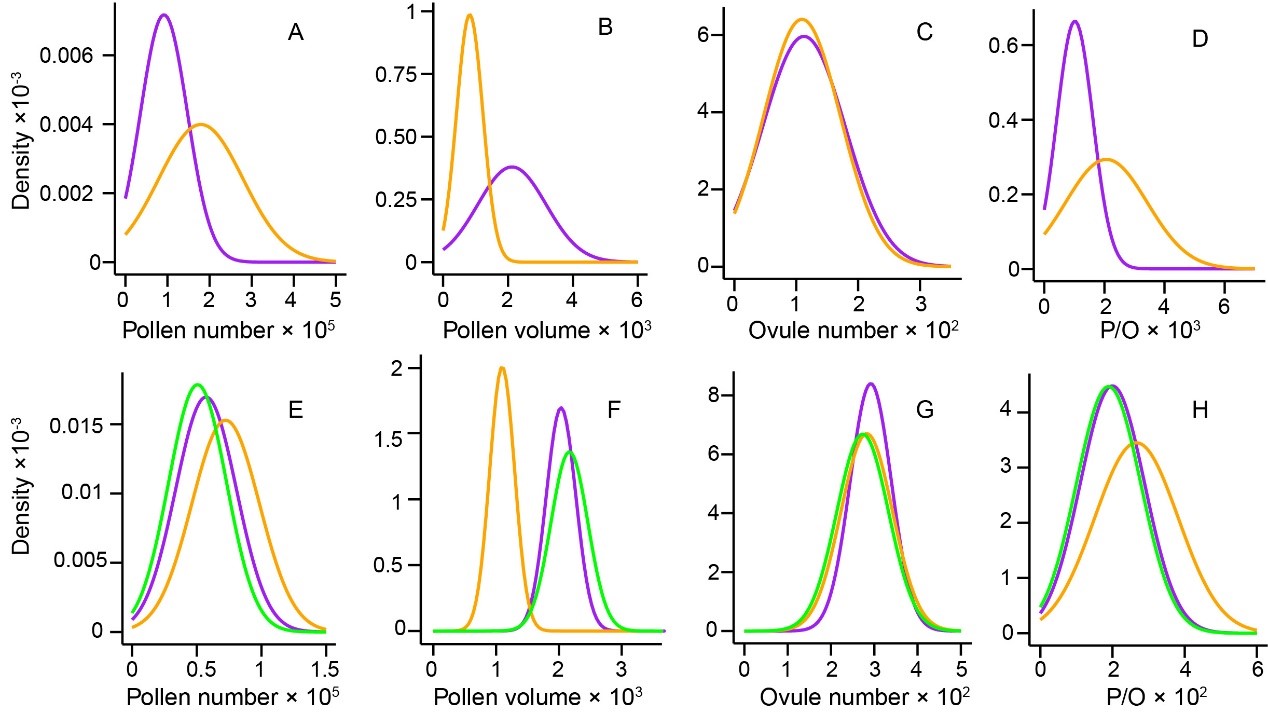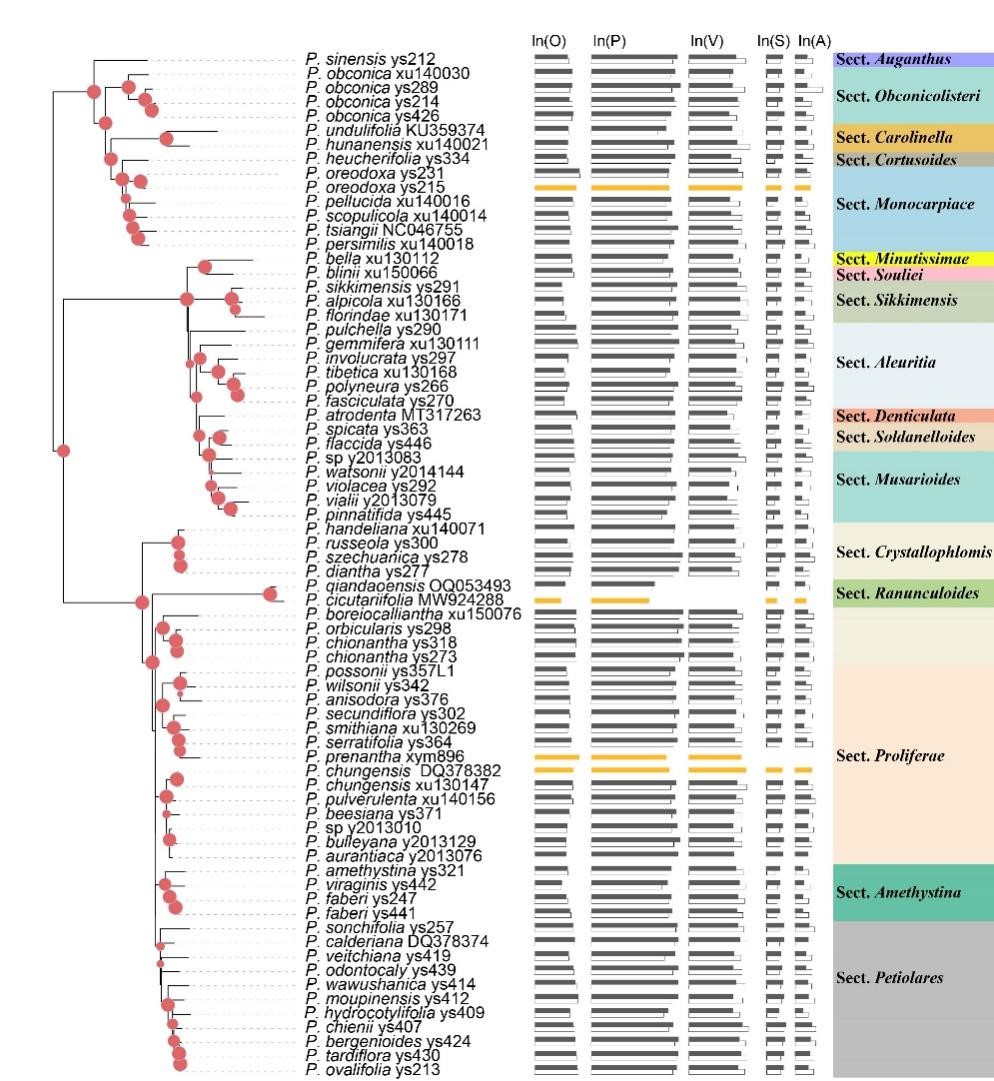Researchers Reveal the Patterns and Influencing Factors of Pollen-Ovule Variation in Primula
The production of pollen and ovules in angiosperms varies widely both within and among species, playing a critical role in plant reproductive success. Investigating the causes of pollen and ovule variation helps us understand how ecological and reproductive factors shape the allocation of sexual resources. However, few studies have examined how environmental factors and floral traits affect pollen and ovule variation across closely related species in a phylogenetic framework.
The genus Primula includes approximately 500 species distributed mainly across the mountainous regions of the Northern Hemisphere, with the southwestern mountains of China serving as the modern center of its diversity. The elevation range of its distribution spans from 50 m to 5000 m. Primula species are insect-pollinated and exhibit distyly, a floral polymorphism characterized by two morphs within a population that differ in the relative positioning of their male and female reproductive organs. Distyly facilitates precise pollen transfer and promotes outcrossing, making it a model system for studying the balancing selection of floral polymorphisms and the allocation of sexual reproductive resources. Additionally, distyly can evolve into homostyly, a floral form capable of self-pollination.
The researchers collected data on pollen and ovule production, floral traits, and population elevation for 73 Primula species (99 populations), including distylous and homostylous morphs. They analyzed these data within a phylogenetic framework to explore the factors influencing gamete variation. The key findings include: Regardless of phylogenetic considerations, the pollen production of both pin and thrum flowers was positively correlated with elevation. A possible explanation is that species at higher elevations produce more pollen to cope with uncertain pollination environments. The size of pollen grains was positively correlated with the length of the corresponding style, which helps maintain male fitness balance between the two morphs. Ovule number did not differ between floral morphs within species and was not influenced by elevation but showed a strong phylogenetic signal. The transition from distyly (outcrossing) to homostyly (selfing) was associated with a significant reduction in pollen production, supporting the hypothesis of the selfing syndrome.
Through comparative analysis of Primula species, this study highlights the complex interactions between intrinsic and extrinsic factors influencing pollen and ovule production. It underscores the importance of separately considering pollen and ovule data. Distylous plants like Primula exhibit classic examples of morphological and functional convergent evolution in sexual reproduction, making them a focal point in evolutionary biology. Future comparative studies across multiple angiosperm lineages may further elucidate the mechanisms and adaptive significance of repeatedly evolved functional traits.
The research is published in Journal of Systematics and Evolution (JSE) with a title "A comparative analysis of gamete production in distylous Primula: Associations with floral traits and elevation" (https://onlinelibrary.wiley.com/doi/10.1111/jse.13146). Dr. YUAN Shuai from Plant Taxonomy and Diversity Research Group at the South China Botanical Garden and Dr.ZENG Gui (lecturer at China West Normal University) are co-first authors, and ZHANG Dianxiang is corresponding author. The research also involved Prof. Spencer C.H. Barrett from the University of Toronto, as well as Dr. LUO Shixiao, Dr. XU Yuan, and Dr.HAO Kai from the South China Botanical Garden. The project was funded by the National Natural Science Foundation of China and the Youth Talent Program of the South China Botanical Garden, Chinese Academy of Sciences.

Fig.1. The distribution of floral traits in Primula species.(Imaged by YUAN et al)

Fig. 2. Phylogenetic relationships of Primula based on three chloroplast regions (matk, trnL- trnF, rpl16), with support values greater than 75% indicated on the clade by a red circle. Morphological traits of Primula species are logarithmically transformed and represented in the bar chart on the right-hand side.(Imaged by YUAN et al)
File Download: